C. H. Mackintosh Collection (35 vols.)
Digital Logos Edition
Overview
The C. H. Mackintosh Collection contains thirty-five volumes of the most important sermons, books, and commentaries from one of Ireland’s most famous preachers and prolific writers. Charles Herbert Mackintosh appealed to the pastoral and theological concerns of ordinary people, connecting the richness of Scripture to the events of daily life—all while never compromising good scholarship. His approach not only propelled the early expansion of the Plymouth Brethren movement and fueled a revival in Ireland, but also set the precedent for preaching and teaching in the decades that followed.
John Darby once quipped to Mackintosh, “You write to be understood.” Now, the writings and commentaries of Charles Herbert Mackintosh are easier to understand than ever! Your Libronix Digital Library links the books, sermons, and commentaries included in this collection to your favorite Bible translations and Bible dictionaries and encyclopedias. That means you can perform concentrated and accurate research on Mackintosh’s books at the click of your mouse, or read all of his books with the rest of your reference tools close at hand. That makes the Logos edition of the C. H. Mackintosh Collection an indispensible tool for understanding the life and thought of one of the Plymouth Brethren’s most important preachers.
This title is included in the following collections
You can save when you purchase this product as part of a collection.
Logos 7 Collector's Edition Le...
$11,399.99$11,399.99

- Mackintosh’s most important commentary: Notes on the Pentateuch
- Thirty-four books, plus seventeen shorter pamphlets and tracts
Man’s complete ruin in sin, and God’s perfect remedy in Christ, are fully, clearly, and often strikingly presented [in Mackintosh’s writings].
—Andrew Miller, a leader of the Plymouth Brethren movement
- Title: C. H. Mackintosh Collection
- Publisher: Loizeaux Brothers Publications
- Author: C. H. Mackintosh
- Volumes: 34
- Pages: 3,061
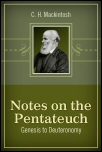
For more than one hundred years, pastors, teachers, and students of the Bible have benefited from Mackintosh’s deeply devotional commentary on the first five books of the Bible. His reflections are borne out of prolonged reflection and pastoral sensitivity—not abstruse theological concepts or an abstract engagement of the text. Mackintosh coaxingly invites readers to place themselves within the stories of the Pentateuch and confront the issues faced by the characters—to walk the garden with Adam and Eve, to connive with Jacob, to travel with Joseph, and to wander with the Israelites from the bondage of Egypt to the freedom of the Promised Land. The Pentateuch expresses the most basic human sentiments, and exposes the tension between promises and fulfillment, good and evil, belief and deception. Mackintosh’s Notes on the Pentateuch shows how these books lay the groundwork for God’s redemptive history.
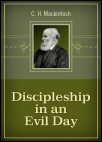
Based on Mackintosh’s lecture on the first three chapters of Daniel, Discipleship in an Evil Day draws connections between Daniel’s experiences and the contemporary challenges faced by the church. The prophet Daniel and the modern church find themselves in similar situations: both are tempted to yield to surrounding influences, and both are called to submit to God. Most importantly, both the church and Daniel are called to model discipleship.
But how is the church meant to practice discipleship in a hostile and formidable culture? According to Mackintosh, the life of Daniel serves as an important reminder that God’s love for Daniel in exile matches his faithfulness to the church in the present. In Discipleship in an Evil Day, Mackintosh draws parallels between Daniel’s life and the life of the church in order to encourage the church toward greater discipleship in the present.
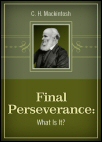
Can a believer ever be lost? Do those who rescind their belief in Christ compromise their eternal salvation? In Final Perseverance: What Is It?, Mackintosh examines the words of Christ and the text of Scripture to articulate a doctrine of the perseverance of the saints. In the same way that works cannot save sinners, neither can works compromise salvation. Any other view, says Mackintosh, undermines the magnitude of Christ’s death and resurrection.
Final Perseverance: What Is It? avoids theological abstraction. Mackintosh speaks from experience—the best vantage point for understanding the grace he professes.
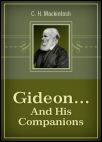
How does God operate during periods of isolation and abandonment? As Israel spiraled toward disunity and fragmentation in the book of Judges, Mackintosh approaches the story of Gideon with honesty and humility. In spite of Gideon’s diminished competency, God calls him to lead Israel and rise above prevalent unbelief. Gideon…And His Companions serves as an accessible introduction to the life of Gideon and the complex themes in the book of Judges.
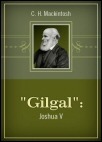
For the Israelites, Gilgal served as a transition point—from the defeat of death to the victory at Jericho, from the wanderings in the desert to the freedom of the Promised Land. But before the Israelites conquer Jericho, and before they enter into redemption, freedom, and life, they celebrated the Passover and commemorated God’s work. In Gilgal, Mackintosh connects this important moment of transition from Israelite history to the larger transition point in salvation history of Christ’s death and resurrection, where the old order of wandering is replaced with promises of freedom and life. Using the story at Gilgal in Joshua 5 as a metaphor, Mackintosh reminds us of the importance of commemorating our own salvation history.
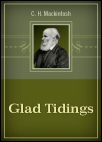
If salvation makes the most sense from the perspective of utter ruin, then what makes the doctrine of election so controversial? According to Mackintosh, the disagreement over election—the cause of church splits and religious wars—lies not in the doctrine itself, but in the way the doctrine is applied. Too often, the church preaches the doctrine without preaching the person of Christ, thereby preaching discouragement and despair instead of hope and grace. In Glad Tidings, Mackintosh shows how the doctrine of election can be applied instead of pandered, and preached instead of provoked. The words of reconciliation in Glad Tidings speak profoundly to contemporary reiterations of the debate over election.
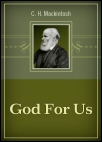
“How much is wrapped up in these few words—God for us!” begins Mackintosh in his exposition of Romans 8. This short book, whose title is derived from the phrase “God for us,” found in Romans 8:31, identifies the constancy of God’s faithfulness and the numerous instances of it throughout the Bible. Ultimately, Mackintosh outlines a salvation which comes without qualifiers or compromises. Despite every reason why God should be against us, God is for us.
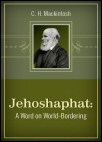
Jehoshaphat represents a lone follower of God amid a succession of evil kings. Normally, his name is buried in a chronology of idolatry, wickedness, and the outright desecration of God’s holiness. But Jehoshaphat chooses a different path. He serves as an example of godly living in a corrupt society. According to Mackintosh in Jehoshaphat: A Word on World-Bordering, Jehoshaphat is noteworthy not only for his remarkable reign, but because he serves as a metaphor for the church’s place in the modern world. In this way, his exposition of Jehoshaphat’s life extends from biographical tale to timely spiritual instruction.
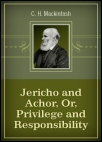
The story of Jericho’s walls crumbling is immortalized as the moment when God delivered Canaan to the Israelites, thereby fulfilling his promise to Abraham and ending the Israelites’ forty years of desert wandering. But what comes next is telling. The months and years that follow the battle of Jericho are filled with squandered blessings, a mix of victory and defeat, and a tenuous relationship between the Israelites and God. The Promised Land seemed to contain more hardships than promise.
In Jericho and Achor, Mackintosh provides an exposition of the events immediately following the ruin of Jericho, and uncovers important lessons from the successes and trials of the Israelites. In particular, Mackintosh shows how the sins of a few affect the lives of the whole of Israel—exposing a latent form of evil as deadly then as it is dangerous now. God’s call entails responsibility and an account of corporate sin, since the sins of a few affect the lives of everyone.
All told, the presence of God depicted in Jericho and Achor prefigures the presence of God in the New Testament. In the same way that the Church is altered at Pentecost, the Israelites are altered as God dwells with them in the newly discovered Promised Land. The journey of the Israelites in the Old Testament mirrors the Spirit’s work in the Church in the New Testament—and the present.

Why does God permit pain and suffering? Why are godly individuals such as Job subject to divine testing? The book of Job is filled with unresolved problems, unanswered questions, unhelpful advice, and theological dilemmas. Mackintosh’s exposition on the book of Job in Job and His Friends attempts to fill a gap in scholarship on the book by constructing a theology of suffering and examining the pitfalls of the advice of Job’s friends.
The book is divided into three distinct sections: who Job was, what he had, and what he did. Beginning with this threefold approach—not with ancillary issues such as authorship and dating—Mackintosh aims to offer practical remarks on Job which address the difficult depiction of God and the honest lament of Job. In this way, his interpretation of Job represents a subtle jab at the liberal criticism of his day.
Suffering—whether Job’s or ours—commands a response. Sometimes that response comes in the form of rebellion; other times it prompts lament. Still other times, we might solicit advice or work our way out of our problems. Whatever the case, suffering should prompt a re-examination and return us to God. Job and His Friends portrays Job as an exemplar for the times in which we encounter tragedy and despair.
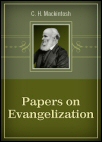
God actively engages in evangelism—the Church should, too. The nature of the Gospel and the scope of grace should compel the Church to preach beyond itself, yet Mackintosh observes that many evangelists abandon their work. Why do evangelists pursue other interests? Why do evangelistic efforts languish? Most importantly, how can they be revived?
Each chapter in Papers on Evangelization contains a brief exposition of a key text on evangelism, along with Mackintosh’s advice and encouragement. He reminds evangelists of the urgency of their task and the nature of their calling. Fittingly, in same vein as the New Testament epistles between Paul and Timothy, the second half of Papers on Evangelization is devoted to correspondence between Mackintosh and an unnamed evangelist.
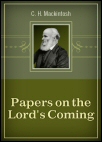
Christ’s second coming figures prominently throughout the New Testament. Christ speaks of it. Paul hopes for it. The apocalyptic literature in Revelation warns of it. Given the multiple biblical approaches and a varied history of interpretations, how are we to understand Christ’s Second Coming? Mackintosh combs the New Testament to understand the nature of the Second Coming and the specific events which will precede it. He compares prophecy, parables, and apocalyptic literature on the subject to uncover the implications for both believers and unbelievers.
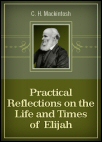
The story of Elijah is recognized as one of the many instances where God preserved his people in the middle of evil—an evil king, a deteriorating nation, and opponents ready to tear Israel apart. But most importantly, Elijah’s life powerfully reveals God’s modes of interaction with the world and God’s methods for confronting evil. Mackintosh’s biography of Elijah connects the life of Elijah to the central figures of the New Testament—such as John the Baptist, Peter, and Paul—and illustrates ways which the church can minister within the context of evil. The conclusion of Practical Reflections on the Life and Times of Elijah is devoted to Mackintosh’s remarks for the church.
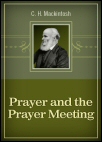
Why should we pray? How does God answer prayer? In Prayer and the Prayer Meeting, Mackintosh provides a thorough scriptural analysis of the key texts on prayer, including the ways in which Jesus prays, along with his instructions to the disciples to do the same. Mackintosh uses these texts to determine the basis and function of prayer, especially corporate prayer. He provides instruction for conducting public prayer and for cultivating an attitude and posture of prayer.
Prayer, he says, leads to unity. But to become unified, the church must resist formalism, powerless profession, dead routine, and mechanical religiousness. Prayer and the Prayer Meeting contains helpful advice and encouragement for building and maintaining an active prayer life.
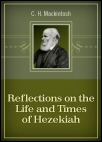
Christians have much to learn from the life of Hezekiah, and Mackintosh has much to teach. Hezekiah exhibits the characteristics of service to God, unlike his predecessors, who doubted God’s work and resisted proper devotion. Sadly, the church often more closely resembles the latter.
What can we learn from Hezekiah? We must resist inactivity and ill-timed service. We must not merely exhibit outward expressions of the Gospel, but, like Hezekiah, cultivate the inward power of God. Reflections on the Life and Times of Hezekiah provides a thorough and accessible introduction to the life of Hezekiah, and offers advice about how to apply it to the present time.
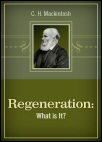
What is regeneration in Christ? How is it produced? What are its results? In this volume, Mackintosh aims to identify regeneration and its effects in the lives of believers. In the process, he counters the trend of judging the extent of regeneration from feeling or experience. Instead, says Mackintosh, the effects of regeneration must be judged in accordance with the word of God. Mackintosh also draws heavily from Jesus’ conversation with Nicodemus, and Paul’s letter to the Romans to illustrate the process of rebirth and renewal.
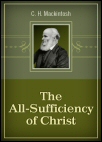
The All-Sufficiency of Christ addresses what Mackintosh calls a lack of “settled peace” in the church: individuals who drift, worry, doubt, and feel external pressures on their salvation. Much of the anxiety stems from an awareness of the gap between the suffering in the world and the promises of God. The work of Christ resolves this conflict—Christ provides comfort by conquering evil. In The All-Sufficiency of Christ, Mackintosh succinctly outlines the ramifications of redemption in Christ for the world.
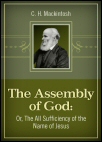
What is the assembly of God? God’s people have been gathering since he created them—so what makes the church an assembly? Mackintosh’s asks not out of skepticism or criticism, but out of a genuine concern for the nature and identity—and the future—of the church. It is not such an easy task to determine the location and function of the assembly of God’s people, since our conceptions of God’s assembly on earth are based on prejudices and personal predilection. In order to recognize God’s assembly, we must be exclusively taught by God’s word, led by God’s Spirit, and attuned to the operation of God in the world through the work of the church. In this way, The Assembly of God: Or, The All-Sufficiency of the Name of Jesus functions as a biography of the church: it Mackintosh begins with Jesus’ promise to Peter to build the church and ends with the Second Coming of Christ.
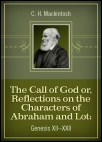
The Call of God, Or Reflections on the Characters of Abraham and Lot: Genesis XII–XXII chronicles the perplexing relationship between Abraham and Lot, and the ways in which the sentiments of those two characters have operated throughout Israel’s history and in the Church ever since. Mackintosh reveals an astonishing contrast in the behavior exhibited by Abraham and Lot, and implores his readers to notice Abraham’s faith—much like the author of Hebrews did—and follow his example.
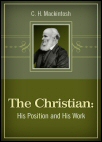
Who are Christians, and what do they do? Mackintosh explores the nature of identity in Christ and the tasks which that identity entails. He aims not to detract from the prominence of grace and the promises of eternity, but attempts to ponder daily life from the perspective of eternity. Mackintosh explains that the central challenge lies in the tendency to judge our work by its quality, not the extent to which our work pleases God. The Christian: His Position and His Work addresses this challenge with a reminder that the task of the church is not theological hairsplitting , but accomplishing God’s work on earth.
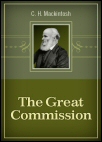
The Great Commission is cited as the rationale for much of the church’s work, especially preaching, teaching, evangelism, and baptism. Mackintosh argues that one of Jesus’ most important instructions to his disciples is increasingly taken for granted. How does the church baptize and preach? And what does baptizing and preaching have in common with repenting and believing? The Great Commission calls us to reexamine our presumptions about the Great Commission and rediscover the importance of Jesus’ words and the urgency of the task.
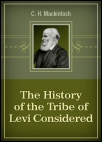
God sets us apart as a royal priesthood. What does it mean to be a priest? Mackintosh studies the life of Levi and the history of the Levites to understand the nature of the priesthood and the implications of being set apart by God. The History of the Tribe of Levi Considered examines the history of the tribe of Levi, the order of the priesthood, the scope and functions of Levitical offerings, and the priestly duties administered by the Levites. More importantly, the life of Levi reflects the character of God as it unfolds in history, and points to the life of Christ and the broader work of God which continues into the present. Levi serves as an exemplar for those set apart by God.
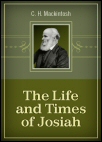
Josiah ascended the throne of Judah amid the accumulated sins of his father and grandfather, and rampant corruption. Yet from a nation replete with idolatry and desecration came a rediscovery of God’s law—all under the direction of Josiah. The story of Josiah corrects the human tendency to lean on earthly authority. This story teaches not only the importance of following God in times of evil, but also underscores the value and authority of the word of God. Mackintosh retells this story in a way that connects Josiah’s life to the challenges of the present era.
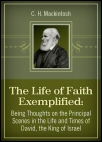
In The Life of Faith Exemplified, Mackintosh turns to the story of David in order to understand how God operates in moments of crisis. Although he writes this book to address the economic hardships he himself faced—the Potato famine, in particular—his deeper motive lies in understanding how God’s presence during David’s crisis might speak to times of hardship whenever they occur. In this captivating retelling, Mackintosh recounts the prophecy of Samuel, the challenge of Goliath, the close encounters with Saul, and David’s role during Israel’s epochal moment in history. Most importantly, David’s life reminds us that God’s covenant transcends present struggles.
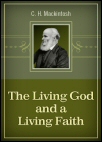
Faith in God transcends unsettled questions, conflicts, and doubts—it serves as the antidote to errors, evils, and hostilities. Unfortunately, for many, faith takes a lifeless, stagnant form. In The Living God and a Living Faith, Mackintosh implores his readers to recover a living faith by following the example of Jehoshaphat. In the face of impending destruction and complete annihilation, Jehoshaphat’s faith in God saved Israel and transformed the kingdom. His unequivocal faith in God serves as a model for us to follow.
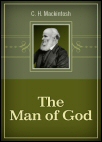
What is our identity in Christ? To answer the question, Mackintosh takes a cue from Paul’s epistles to Timothy. The first letter begins with instructions about Timothy’s role in a flourishing church. The second letter, however, describes a fractured and broken church in which Timothy barely copes. In this more difficult context, Paul implores Timothy to persevere in spite of challenging situations, and in doing so, to discover how God works through both individuals and broken communities. For this reason, Paul calls Timothy a “man of God.” Yet how does identity in God differ from human identity in nature? In the world? Apart from God? By drawing these contrasts, Mackintosh points to the lessons Timothy learned from Paul, and the lessons we can draw from their correspondence.
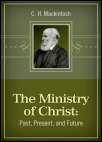
In The Ministry of Christ: Past, Present, and Future, Mackintosh attempts to correct an imbalance of focus. Too often, he says, Christians focus on ministering for Christ without considering how Christ might minister to them. In doing so, the church unwittingly obscures the ways in which Christ himself ministers. Beginning with Jesus’ words “I come not to be served, but to serve,” Mackintosh’s account links together the concept of glory with Jesus’ life of humiliation, and links Jesus’ washing of feet with his life-changing resurrection.
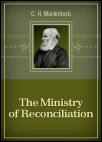
What foundation does reconciliation rest on? What is the purpose of reconciliation? In this exposition of 1 Corinthians 5, Mackintosh attempts to correct the human tendency to look within for assurance and comfort. Human experiences, impressions, and conviction often prove false and cannot serve as the ground of any kind of certainty. In The Ministry of Reconciliation, Mackintosh shows that through Christ, individuals in the church are reconciled to God and to one another—serving as the basis for any kind of certainty.
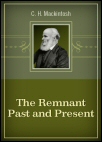
Throughout history, countless people-groups have been identified as remnants, but such labels don’t fully take into account the implications of being forcibly cut off and discarded. The Remnant Past and Present traces the history of Israel and the history of the Church to reveal a rich display of divine grace: God saves and preserves his people against insurmountable odds. From this perspective, Mackintosh reminds his readers to beware of ecclesiastical pretention. We cannot save ourselves and cannot restore the Church—this work is reserved for God.
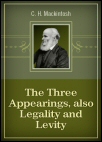
The word “appearing” occurs three times in Hebrews 4, and the repetition, says Mackintosh, isn’t accidental. In all, Hebrews 4 uses the word “appear” to describe three distinct—but related—functions of Christ work: Christ appears on earth to accomplish a certain work, appears in heaven to accomplish a certain ministry, and will appear in glory at the Second Coming. This concise word study succinctly unites the diverse capacities in which Christ serves.
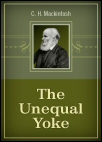
Jesus’ warnings against unequal yokes are not confined to marriage, but serve as a caution for all Christian relationships. The Unequal Yoke identifies the consequences of linking with worldly desires which detract from our rebirth and regeneration in Christ. Mackintosh aims to correct a discipleship of pessimism and to encourage the Church to become yoked with Christ.
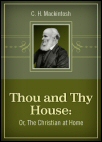
God has a house. But where? And who is invited in? In Thou and Thy House, Or The Christian at Home, Mackintosh contrasts the imagery of God’s house with the house of God’s servants—the church. He also incorporates the numerous instances of God’s home in the Bible—the tabernacle, the temple, the person of Christ, and the church. In the end, Mackintosh implores his readers to govern their own homes by using God’s house as the model.
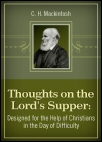
For all the division, schism, controversy it has caused, the sacrament of the Lord’s Supper has been observed by the entire Church since its beginning—consequently one of its most unifying features. Still, the historicity of the sacrament does not diminish the questions and concerns which surround it. Mackintosh addresses the superstition and fears that have been historically associated with the sacrament and argues that the bread and the cup have become the objects of misdirected worship. Thoughts on the Lord’s Supper redirects our attention from the bread and cup to the host of the meal, whose instructions to eat and drink in remembrance of him are made clearer by Mackintosh’s thoughtful reflections.
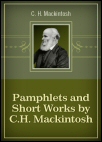
In addition to Mackintosh’s books, the C.H. Mackintosh Collection also includes seventeen of Mackintosh’s shorter publications, including pamphlets, sermon notes, tracts, as well as individual lectures and sermons.
- The Bible: Its Sufficiency and Supremacy, and Christianity…What Is It?
- The Bible: Whence Is It? From Heaven, or of Men?
- The Christian Priesthood
- Corporal D. or, The Snares of a Young Convert
- David’s Companions and Paul’s Friends (An Extract from a Letter)
- Eternal Punishment
- God’s Way and How to Find It
- A Help or a Hindrance: Which? (A Question for All in the Assembly)
- Is the Link on?
- Jehovah’s Demand and Satan’s Objections
- The Life-Boat
- Prayer, In Its Proper Place
- Saved, or Lost?
- A Scriptural Inquiry into the True Nature of the Sabbath, the Law, and the Christian Ministry
- Thoughts on Confirmation Vows
- The Two Resurrections and the Judgment
- A Word on Christian Intercourse
Charles Henry Mackintosh was born in 1820 in Ireland. He converted to Christianity through correspondence with his sister and through reading John Darby's Operations of the Spirit.
Reviews
8 ratings

Faithlife User
2/8/2018

Schamma
10/30/2014
Robert G. Alkire
9/11/2014

Michael
8/19/2014

Larry Proffitt (I
7/9/2014
AeliusCicero
4/15/2014

Matthew Dennison
11/30/2013
vitaly shatilov
11/15/2012
I purchased the mackintosh collection in late september and am still waiting for them. my email address has changed from evitalyone @yahool.com.au to evitalyone@gmail please let me know when I expect delivery of the 35 volumes vitaly shatilov 61 finniss st. marion south australia 5043
Thomas M. Campbell
1/21/2012
These were my first physical commentaries which I purchased in 1961. I still use them quite often in my studies. A great set of writings by a very knowledgeable writer of the 1800's.